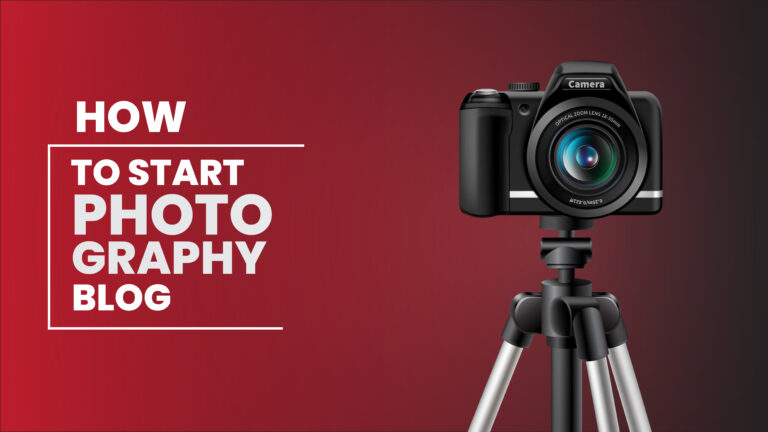Photography blogging has become an essential platform for creatives to showcase their work, share tips, and build a loyal audience. In 2026, the demand for high-quality visual content continues to grow, making it an ideal time to start a photography blog. A successful photography blog combines stunning visuals, engaging storytelling, and actionable advice for photography enthusiasts. Whether your focus is on portrait photography, travel photography, or photography tutorials, a well-structured blog can help you connect with a global audience while establishing your authority in the niche.
What is a Photography Blog?
A photography blog is a dedicated online platform where photographers, hobbyists, and professionals can showcase their work, share insights, and connect with an audience that shares a passion for visual storytelling. Unlike social media profiles, a photography blog allows creators to fully control the presentation of their content, combining high-quality images with informative text, tutorials, and personal narratives.
Photography blogs often include:
- Photo galleries and portfolios to display your best work and creative projects.
- Tutorials, tips, and guides that help readers improve their photography skills.
- Camera gear reviews and recommendations, providing insights on equipment, lenses, and accessories.
- Behind-the-scenes stories and experiences give a personal touch to your photography journey.
- Creative techniques and editing advice, sharing workflows and software tips for better results.
Beyond showcasing talent, photography blogs act as a learning hub and community space, inspiring others, fostering engagement, and providing resources for photographers of all levels. A well-maintained photography blog can establish credibility, attract a loyal following, and even open opportunities for collaborations, sponsorships, or monetization in the photography industry.
How to Start Your Photography Blog in 2026
Define Your Photography Niche
Focusing on a specific photography niche helps your blog stand out. Popular options include:
- Landscape Photography
- Portrait Photography
- Wildlife Photography
- Travel and Adventure Photography
- Street and Urban Photography
A clear niche allows you to create specialized content that resonates with a dedicated audience and positions your blog as an authority.
Research Your Audience and Trends
Understanding your target audience is essential. Consider:
- Age, experience level, and photography interests
- Preferred content types, such as tutorials, gear reviews, or personal stories
Analyze trends using tools like Google Trends and social platforms such as Instagram, TikTok, and Pinterest. Researching what works in the photography community helps shape your content and fill gaps in the market.
Choose a Blogging Platform and Hosting
Select a platform that supports multimedia content and customization. Recommended options include:
- WordPress.org – flexible and SEO-friendly
- Squarespace – visually stunning templates for portfolios
- Wix – beginner-friendly drag-and-drop interface
Pair your platform with reliable hosting like Bluehost or SiteGround to ensure speed, uptime, and security.
Design a Professional Blog
The blog’s design affects user experience and credibility. Focus on:
- Mobile-responsive layouts
- Simple navigation and clear categories
- High-quality visuals that showcase your photography
- Consistent fonts, colors, and branding
A clean, professional design encourages visitors to explore more of your content.
Build Essential Pages
Certain pages are vital for trust and engagement:
- About Page: Share your journey, passion, and mission
- Contact Page: Provide ways for readers or brands to reach you
- Privacy Policy: Explain data collection and compliance with privacy regulations
These pages enhance credibility and set a professional tone for your blog.
Develop a Content Strategy
Create a plan for consistent, engaging content that appeals to your audience:
- Tutorials, gear reviews, and photography tips
- Personal stories and case studies
- Seasonal content or trending photography topics
Use a content calendar to maintain consistency and keep readers returning for new insights.
Optimize for Search Engines
SEO ensures your photography blog ranks well in search results. Focus on:
- Keyword research using Google Keyword Planner or SEMrush
- Optimizing titles, headings, meta descriptions, and image alt text
- Internal linking and fast-loading pages
- Mobile-friendly design for better user experience
Proper SEO increases visibility and attracts targeted traffic.
Promote Your Blog Effectively
Visibility is key for growth. Promote your content by:
- Sharing posts on Instagram, Pinterest, TikTok, and Facebook
- Joining photography communities and forums
- Collaborating with influencers or other bloggers
- Engaging readers through comments and email newsletters
Active promotion builds audience trust and loyalty.
Monetize Your Photography Blog
Once your blog gains traction, explore revenue streams such as:
- Affiliate Marketing: Promote cameras, lenses, and photography gear
- Sponsored Content: Partner with photography brands
- Digital Products: Sell presets, online courses, or e-books
- Advertising: Display ads through Google AdSense or other networks
Track performance with Google Analytics to refine strategies and maximize revenue.
Engage Your Audience and Build Community
Engagement drives loyalty and long-term success. Encourage interaction by:
- Responding to comments and messages
- Hosting webinars, live streams, or Q&A sessions
- Encouraging guest posts or user-generated content
- Creating challenges or contests to involve your readers
A strong, interactive community boosts shares, repeat visits, and blog credibility.
Conclusion
In 2026, publishing a photography blog requires strategic planning, creativity, and consistent effort. Start by defining a clear photography niche and understanding your target audience to ensure your content resonates with the right readers. Choose a flexible and feature-rich blogging platform that supports high-quality visuals and multimedia content. Focus on producing engaging, informative, and visually appealing content while leveraging SEO strategies to improve your search visibility. Promote your blog across social media, photography communities, and email newsletters to expand your reach. Build a loyal community of readers, interact with your audience, and explore monetization opportunities such as affiliate marketing, sponsored content, and digital products. With dedication, creativity, and a data-driven approach, your photography blog can establish authority, attract a growing audience, and become a trusted destination for photography enthusiasts.
Frequently Asked Questions (FAQs)
What is the best platform to start a photography blog in 2026?
WordPress is ideal due to its flexibility, customization options, and SEO-friendly features. Squarespace and Wix work for simpler setups.
How do I choose the right niche for my photography blog?
Pick a niche that matches your interests and expertise, like travel, wildlife, or portrait photography. Focused niches attract loyal audiences.
How often should I publish content on my photography blog in 2026?
Post at least once a week to stay consistent and keep readers engaged. Mix tutorials, photo essays, and tips for variety.
Can I start monetizing my photography blog right away?
Focus on building traffic first. Once established, use affiliate marketing, sponsored posts, or sell digital products.
What are the most effective ways to grow my photography blog’s audience?
Promote on social media, collaborate with other creators, and engage readers through comments and newsletters.

